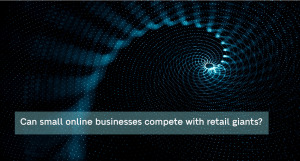Millennials and Gen Z make up for most of the online shoppers. Understanding how these generations behave online is important to design strategies that resonate to them. So let’s discover their unique shopping habits and their evolving expectations, uncovering essential insights that are vital for any ecommerce brand looking to succeed in the online world.
Millennials and Gen Z: some numbers
Millennials are the largest segment of the population and are projected to spend approximately $2.5 trillion globally, while Generation Z’s purchasing power, as found by Bloomberg, stands at $360 billion. However, it is interesting to note that 70% of Gen Z’s parents seek their advice before making a purchase, from electronics to clothes. Their influence is in fact significant and highlights the need to integrate Gen Z preferences in ecommerce marketing strategies, even if they don’t represent the primary target audience.
Generally speaking, Gen Z tend to be more impulsive in their shopping compared to Millennials, and this highlights the importance to integrate specific online buying strategies, specifically designed to encourage impulsive buying, like:
–Fast shipping: the promise of fast delivery encourages impulsive purchases because the instant gratification factor increases.
-One-Click purchasing: simplifying the checkout process with options like “Buy in One-Click” makes it easier for customers to make purchases quickly, reducing the time they have to reconsider their decision.
-Buy Now, Pay Later (BNPL): Buy Now Pay Later allows customers to purchase items immediately and pay for them over time, making more expensive items seem more accessible.
-Free shipping thresholds: offering free shipping for purchases over a certain amount can encourage customers to add more items to their cart to meet the threshold.
-Personalised recommendations: suggesting products based on browsing and purchase history can tempt customers to buy items they might not have seen yet.
-Easy return policies: when customers know that they can return an item with no cost or hassle they feel they have nothing to lose over an impulsive purchase.
-Mobile optimization: people shop anytime, anywhere, especially on their mobile phones. It is therefore important to offer a seamless mobile shopping experience.
-Multiple payment options: offering a variety of payment methods, including digital wallets, will increase chances of people buying your products.
It’s crucial for e-commerce businesses to acknowledge how such simple integrations can increase their chances of products being sold across their different channels.
How Gen Z and Millennials discover new products
When it comes to discovering new products, Millennials love social media, and 72% are influenced by personalised advertising, with one in three making purchases after seeing an advertisement or YouTube video. Furthermore, website SEO optimization is extremely important, as most Millennials use search engines for product discovery too.
Instagram and TikTok are Gen Z’s preferred platforms for product discovery and shopping, with Pinterest drawing the attention of many female social shoppers too.
The perfect shopping experience for Millennials and Gen Z
Millennials are deeply integrated with technology and expect a seamless and comprehensive omnichannel shopping experience. They are highly interested in loyalty programs with 61% already being part of a programme. Both Millennials and Gen Z appreciate rewards like cashback and points, while Gen Z prefers rewards that include multiple brands. The option Buy Now Pay Later (BNPL) is both Millenials’ and Gen Z’s favourite payment method. This encourages 18% more spending because of the possibility to spread costs.
For Gen Z, convenience is the most important aspect when shopping online. This group values fast and efficient deliveries. Integrating express delivery options and highlighting this service in business communication can serve as a catalyst for this particular customer base.
Social impact
Gen Z prioritise businesses that are active in fighting for racial justice, LGBTQIA+ rights, gender equality, and climate change. This is also shared by Millennials, who show a strong interest in affordable healthcare.
Businesses whose products and packaging directly support these causes should highlight their commitment across all communication channels to spread awareness. However, only brands who genuinely and consistently embody these values in their operations should do so. Placing social responsibility and social impact goals on company website and in marketing campaigns cannot just be a superficial marketing tactic. Communication that comes across as intrusive or condescending is likely to be noticed and is counterproductive. Collaborating with non-profits, partnering with like-minded businesses, and forming community groups on WhatsApp or Telegram can further create a dialogue and raise awareness around these themes.
Brand loyalty: the importance of stock management
Regarding brand loyalty, Gen Z won’t think twice before switching to a competitor if their desired product is out of stock or if delivery times are longer than expected. To mitigate this risk, businesses should offer speedy delivery and monitor their stock levels, ensuring popular products are always available. Even restock notification services via email are effective. Cross-sell or upsell is also an effective strategy to maintain customer engagement and loyalty.
Conclusions
To effectively engage Millennials and Gen Z, ecommerce brands should prioritise convenience, speed, and a variety of payment options. Equally important is meeting these tech-savvy generations where they are most active and engaged, always providing an exceptional multichannel shopping experience.





